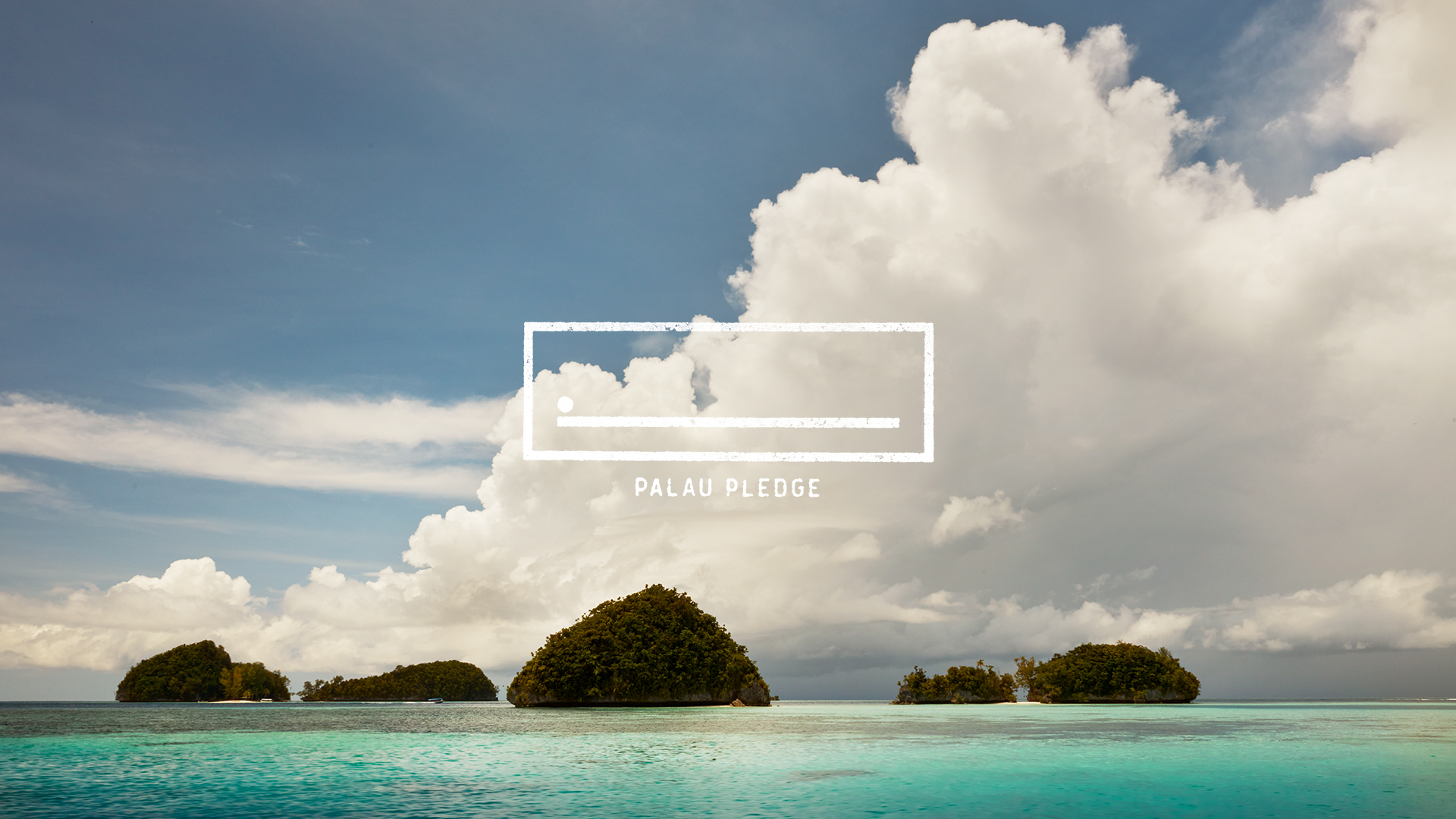
Environment / Travel /
Palau is a place leading the charge when it comes to environmentally conscious travel, pioneering a new model in sustainable tourism. They’ve been ahead of the curve for a while now, with the government having established one of the world’s largest marine sanctuaries, as well as banning tour operators from utilizing single-use plastics and Styrofoam. With the help of Sustainable Travel International, since 2020, they have also been protecting its marine environment through the adoption of the world’s strictest national sunscreen standard.
Now, Palau Bureau of Tourism has recently launched a new project, pulled together with the aim to mitigate its tourism-based carbon footprint. The organisation has partnered with Sustainable Travel International and Slow Food, and is looking to develop a transparent carbon-management plan. According to a report by the Palau government, climate change has been recognised as the greatest challenge for the sustainable development of Palau. ‘Thus the climate change policy cuts across all aspects of sustainable development.’
It’s perhaps not surprising that, as a remote island nation, made up of an archipelago of 500 islands in the western Pacific, the Republic of Palau is under threat from climate change. Rising sea levels are a terrifying concern, as well as over and high-volume tourism (or tourism without conscious awareness, at least). In fact, over 25 per cent of Palau’s landmass sits under 10 metres above sea level, and The Green Peace Islands in Peril report estimates that several of Palau’s inhabited islands may disappear within the next 100 years.

With sea levels rising, intensified tropical cyclones and weather bringing increasing threats, the infrastructure of Palau has to adapt. That’s not to mention the fact that coral bleaching endangers marine life and the beauty that tourists want to see, and that climate change could disrupt supply chains, leading to food insecurity.
It’s for this reason that Palau is taking action. Tourism is Palau’s main industry, so it’s vital to maintain and develop this, and support this in every way possible. To put it into perspective, in 2019, more than 89,000 international tourists visited the country, which has a population of just fewer than 22,000. The United Nations Development Programme states: ‘Tourism is the country’s economic base and is an extremely important industry, contributing US $67 million, or 47%, of its Gross Domestic Product (GDP).’
But, it’s also crucial for us to recognise that tourism is ultimately driving forward the negative impacts of climate change. Tourists fly in from overseas so, of course, fossil fuels are increased and most of these tourists consume overseas imports, causing dollars to leave the local economy. In fact, 85-90% of the country’s food is imported from abroad, producing carbon emissions.

According to the Palau government report, ‘policy concern remains the need for finding a balance between utilizing the natural environment as a driver of economic growth for tourism, and preserving the environment for the cultural, social and economic well‐being of current and future generations and for future tourism development.’
So, what will the project do and how will it work? Excitingly, it is taking an innovative destination-level approach that includes promoting local food production within tourism and developing a carbon management program for tourists – breaking ground with this initiative in the hope that it inspires other destinations.
As part of the initiative and as a beautiful, almost poetic, way of ensuring people declare something worthwhile at customs, Palau is the first nation on earth to change its immigration laws for the cause of environmental protection. Upon entry, visitors need to sign a passport pledge to act in an ecologically and culturally responsible way on the island, for the sake of Palau’s children and future generations of Palauans. Children from all over Palau helped draft it and as the initiative continues to reach out to Palauan businesses, they’re continuing to work with the next generation of Palauans to shape and develop the pledge.

Similarly, to compensate for tourism’s unavoidable emissions, the project will develop a first-of-it’s-kind carbon management programme for tourists to Palau. This will be in the form of a new online platform, on which visitors can calculate and offset the carbon footprint that is associated with their trip. These offset contributions will work harmoniously with Palau’s marine conservation, and will be invested in blue carbon initiative such as mangrove restoration. It is estimated that this unprecedented move has the potential to raise over USD $1 million a year for these carbon reduction initiatives.
In response to the need to encourage regenerative tourism as well as sustainability, the project will increase the proportion of food sourced from local producers and work to reduce the hospitality industry’s dependence on imports. It will also celebrate the islands’ gastronomic heritage, build the capacity of local farmers and fishers and create income-generating opportunities for local communities.
‘The rapid growth of an unsustainable tourist industry based on broken food systems has been a key driver of the climate crisis and ecosystem destruction,’ says Paolo di Croce, General Secretary of Slow Food International. ‘This project represents the antithesis, a solution that strives to strengthen and restore value to local food systems, reduce the cultural and environmental damage caused by food imports, and improve the livelihoods of food producers both in Palau and beyond.’
With such enormous potential to turn the tide on climate change and act as a visible roadmap for other destinations to follow suit, there is a real chance this could inspire others to look at their climate resilience strategies.